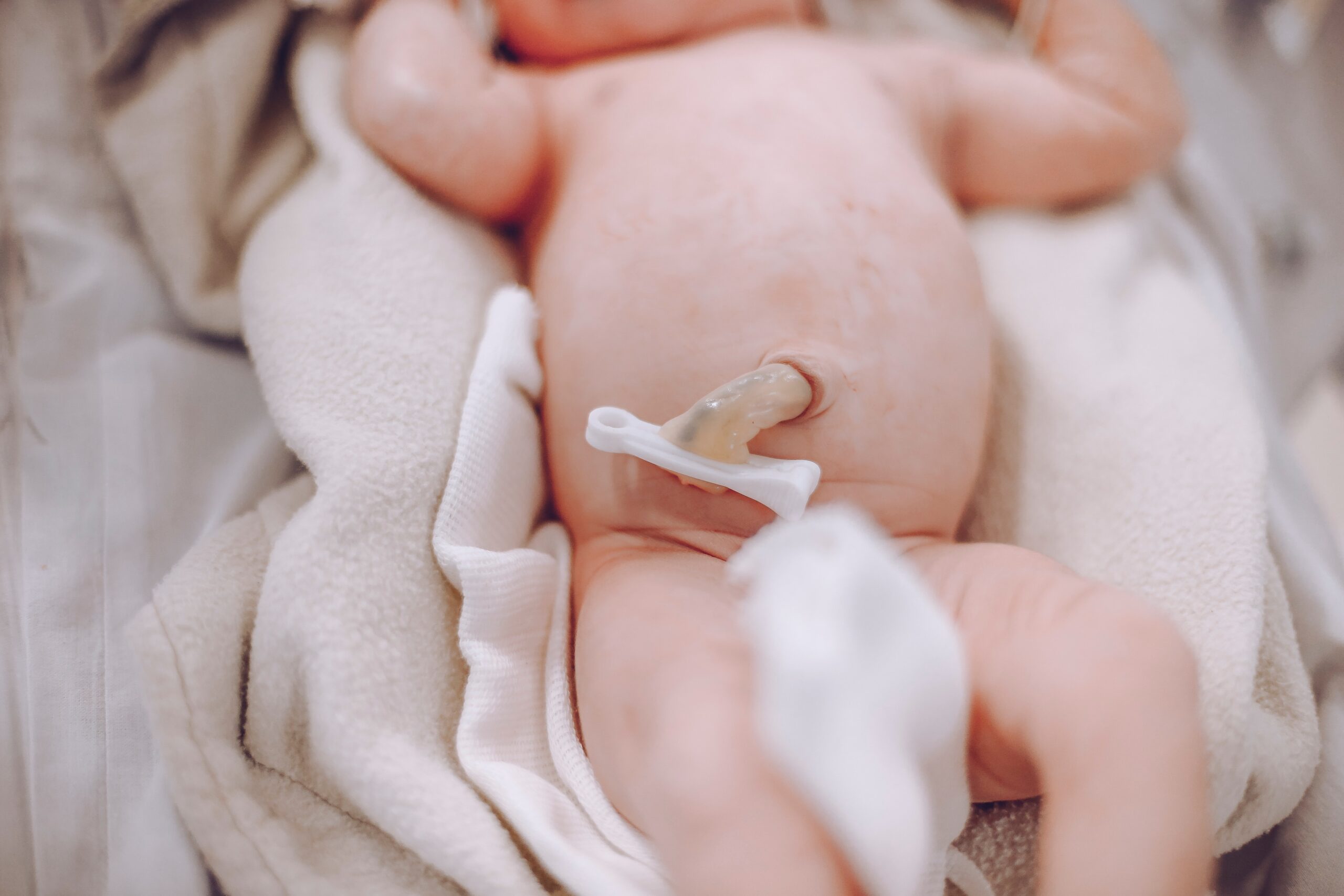
The umbilical cord is an incredible lifeline that connects a growing baby to their mother during pregnancy, but is no longer needed once the baby is born.
During pregnancy, the umbilical cord carries nutrients and oxygen from the placenta to your baby, keeping them alive inside your womb. After the baby is born and capable of breathing with their lungs and feeding with their mouth on their own, the umbilical cord is clamped and cut close to the navel, normally a few minutes after birth.
So, what happens with the umbilical cord after it is cut? And how should new parents take care of it? Here are my top 5 tips to taking care of it. And also, how to recognise if there’s an infection. Let’s drive through all of these questions:
What happens to the umbilical cord after it is cut?
Once deprived of its blood supply, the cord will start to dry out gradually. It will become harder, and it will turn into your baby’s belly button.
Where the cord joins your new-born’s tummy, there will be a 2 to 3cm long stump with a plastic clamp or tie attached.
Your baby’s umbilical cord stump, should naturally fall off between day 5 and day 15 after birth. Be aware that the timing may vary depending on its size and thickness, so don’t worry if it takes longer. Keep in mind that thicker cords may take longer to heal, which is normal.

The latest best way to heal your baby’s umbilical cord
During the several years working in hospital as Neonatal Intensive Care Nurse (NICU), we have been updating our protocols about healing baby’s umbilical cord. Many studies pointing a long time ago that it was necessary to heal it with alcohol, Cristalmina, iodine and a long list of other cocktails.
It’s true that proper care of your new-born baby’s umbilical cord stumps helps prevent infection and promotes healing. And luckily, in recent years, there have been changes in the recommended care, to a better an easy way as a new parent, so let’s talk about the best way to take care of your baby’s umbilical cord.
My top 5 Tips for the best umbilical cord care:
- Keep the cord stump clean and dry.
- Good hygiene is the best way to encourage healing. If the surrounding area it’s dirty (especially with blood), gently clean it with a gauze soaked in boiled water, and then dry it.
- Avoid submerging the cord in water until it has completely healed (I recommend to not bathe your baby until the cord falls off and is dry).
- Allow the cord stump to air-dry. I would recommend to not cover it with nappies, and fold down the top of your baby’s nappy to allow air circulation and prevent contact with urine (especially for boys)
- Contact your healthcare provider if you notice any signs of infection.
How to recognise if there’s an infection?
As we mentioned before, the umbilical cord area should be clean and without any problems. However, if you suspect an infection, watch out for the following signs:
- Redness around the base of the stump.
- Foul smell from the stump.
- Presence of white, yellow discharge or bleeding.
- Inflammation or swelling.
- Your baby experiencing a fever.
- While the baby doesn’t feel pain or discomfort in the cords, they may cry if there is an infection and you touch the stump.

In conclusion, it is essential to take care of your baby’s umbilical cord stump their well-being. Follow these tips and remain vigilant for any signs of infection. However, if you feel a soft lump, it may indicate that your baby has an umbilical granuloma. This condition is not serious and is usually straightforward to treat, which I’ll cover later on in another post. Remember, if you have any concerns or questions, consult your health care provider.






